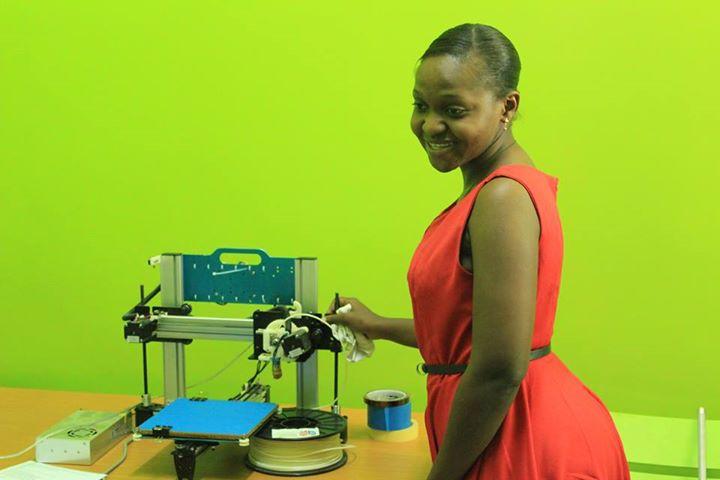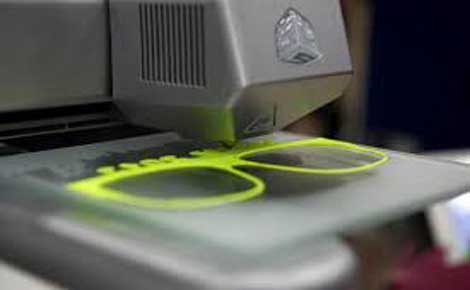The Finns are supporting a project in Tanzania aimed at spurring hardware development businesses starting this year, and the project implemented through Tanzania Science and Technology (TANZICT) is focusing on 3D printer development through an innovation hub based in Dar es Salaam.
 Brian Paul Mnyampi, a co-manager at TANZICT, says the venture into hardware will create a revolution across the country and the region.
Brian Paul Mnyampi, a co-manager at TANZICT, says the venture into hardware will create a revolution across the country and the region.
”Hardware product development is part of innovation process we are now focusing from next year. We see it as a revolutionary field to explore,” says Mnyampi. “We have a lot of materials locally, but there is an absence of infrastructure. Innovation should be focused on creating infrastructure.”
And perhaps the most interesting part of the project is a plan to make use of highly plentiful materials in the area.
TANZICT says easy access to bulk e-waste in Tanzania could mean that production costs will be reduced. They say innovators in what’s called Buni are gearing up to develop their 3D printer skills after some intensive training. Their plan? To make a commercial device with modern capabilities themselves.
“We want to focus more on production of hardware and prototypes that can be used reliably at industrial level and communities,” says Jumanne Mtambalike, the manager of the hub at Buni.
A group called ‘Make Fellows’ meets weekly to take part in guided and mentored sessions on 3D printer technologies and other various other hardware concepts.
“They discuss user needs and that is where our ideas arose,” says Mnyampi. “There’s a lot of electronic waste around, why don’t we make use of it?”
About three years ago, a study by the Cleaner Production Center (CPC) said that Tanzania will generate close to 9,500 metric tons of e-waste from computers alone, so the development team are certain they won’t run short of opportunity.
“Without the support from Finland, we wouldn’t be here,” said Mnyampi.
 The Head of Cooperation at the Finnish Ministry for Foreign Affairs in Tanzania, Kati Manner, is also pleased with the way the Finnish-funded projects are progressing, and says they’re critical to a three-year development strategy plan for Tanzania.
The Head of Cooperation at the Finnish Ministry for Foreign Affairs in Tanzania, Kati Manner, is also pleased with the way the Finnish-funded projects are progressing, and says they’re critical to a three-year development strategy plan for Tanzania.
“We have several programs, and this will form a major part in achieving sustainable economic development,” Manner says. “Most of the programs here work closely with the government and discuss priority areas, and the Tanzict technological projects are key among them.”
As 3D printing technology becomes less complex and expensive, projects are popping up around the globe aimed at exploring ways for the process to impact local economic development. Do you know about any such projects? Let us know in the 3D Printing Technology in Dar es Salaam forum threat at 3DPB.com.
Subscribe to Our Email Newsletter
Stay up-to-date on all the latest news from the 3D printing industry and receive information and offers from third party vendors.
You May Also Like
Model No. Deploys Titan Pellet 3D Printers for Sustainable Furniture Production
Over the years, many designers have tried to create 3D printed polymer furniture. Early pioneers like Janne Kyttanen, Materialise’s MGX, and Joris Laarman have led the way with 3D printed...
3D Printing News Unpeeled: Recycling PLA, More Efficient Atomizing
Filamentive hopes to recycle your PLA if you’re in the UK and order over £500 worth of filament. Their partner 3D Printing Waste (3DPW) will turn the PLA into injection...
Lighting the Way with Potato Starch: Sustainable Polish ECO Lamps Use 3D Printing
Lighting that meets the essence of nature: this is the reality brought to life by ECO Lamps, which introduces a fresh perspective to sustainable lighting design using potato starch. These...
3D Printing News Unpeeled: 3D Printed Construction Standard, Sand Wall & Self Heating Microfluidics
ISO/ASTM Standard 52939:2023 has been released and it sets standards for QA for 3D Printed polymer, composite and cement buildings. This is most welcome since 3D printed construction is a...

































